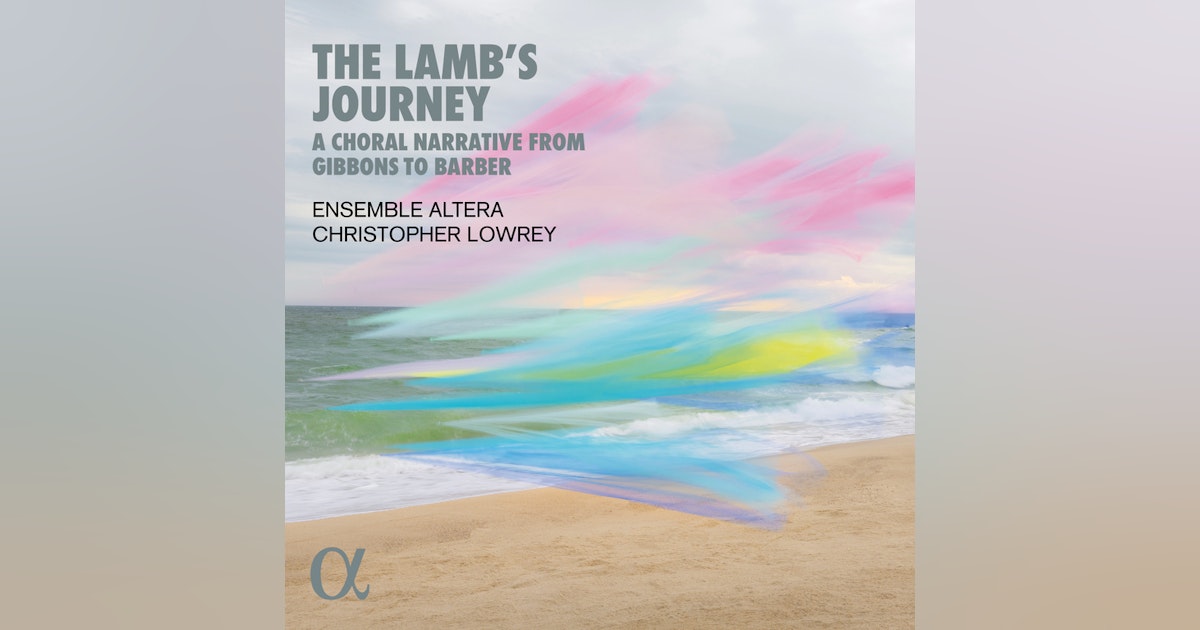
This years’ Christmas stack is tuning out to contain some exceptional releases, and this one is surely near or even at the top of the pile. This particular disc was relased on Halloween, so is as fresh as they come.
Ensemble Altera is a crack vocal ensemble, heard here in its female-only guise. It’s line-up includes Eleonore Cockrham as parr of the “Soprano 2” line-up – she who impressed so much recently with members of the Manchester Camerata at Wigmore Hall (post).
Th first track spells out a key element here: lines, sung by multiple voices, are so together it feels almost impossible. Here’s the first number, which as a single line exemplifies his perfectly: Hildegard von Bingen’s mixolydian O Viridissima, Virga:
Imogen Holst’s music still doesn’t get full due, so it is good to hear two movements from Welcome Joy and Welcome Sorrow for voices and harp (Lishan Tan, who shines here and at every contribution). Rarely can Imogen Holst’s music have enjoyed so much attention lavished on it: listen to the final cadence of the first movement;
Nice to have Imogen Hols’s music right next to Gustav’s: the exquisite dissonances of “Hymn to the Dawn” (from Choral Hymns from the “Rig Veda”). Christopher Lowrey paces this superbly; the music just exudes spirituality, the harp adding a more mobile midmension, supporting and yet somehow parallel to the vocal activity:
We have covered he music of Joanna Marsh on several occasions, including the World Premiere of SEEN, and another Christmas piece, O magnum mysterium, on Someville College’s Resonus disc The Dawn of Grace. Here, it is the Magnificat fom St Paul’s Service (with James Kenneley on organ). . The setting is complex harmonically; Marsh gives the time-honoured text the attention it deserves. This has to be one of the ue highlights of the disc:
Incidentally, Marsh’s Evening Prayer was feared by Ensemble Altera on their previous Alpha disc, Dazzling Light:
(… Marsh’s Worthy is the Lamb is also featured on they disc The Lamb’s Journey.)
Cecilia McDowall is an experienced choral and religious composer. I agree with the booklet notes that the lines hearken back in time with their chant-like demeanour, while McDowall remains, harmonically, true to her own time:
Good to see music by an old University of Surrey colleague of mine (albeit separated by a couple of years), Adrian Peacock – who also produces the album: his There is no rose, each verse increasing in richness, and perfectly handled here. The music seems absolutely timeless:
Ian Shaw is a name new o me, but his I sing of a maiden for female voices and harp is daringly sparse. This takes the same text as the fifth movement of Britten’s A Ceremony of Carols (heard lateri on the disc), and despite the thin textures, there is real affection here:
How wonderful to have some Barbaa Strozzi here (1619-71), accompanied by organ, her “O Maria quam pulchra es” (from Sacri Musicali Affetti), a real assertion of the composer’s true significance:
Karensa Briggs wrote her setting of the Coventry Carol expressly for Ensemble Altera; she brings a sense of internal glowing reverence to the text:
Against this is the very familiar Jesus Christ the Apple Tree by Elisabeth Poston, performed almost in the manner of plainchant, and highly effectively:
The disc moves rather neatly to its conclusion via Briitten’s A New Year’s Carol and a simple beautiful harp solo (the Lento from Gemaine Tailleferee’s harp sonata).
… and so to Bitten’s transfixing Ceremony of Carols. The title implies this is very much a totality, not a sting of carols, and so it is here. That purity is heard again in the opening Procession before the harp bings in joy in “Wolcum Yule!”:
There is another processional in “Thee is no rose”; but it is the intimate that characterises this performance, nowhere more strongly than in “Balulalow”:
“This little babe” has some urgency, perhaps not the most dynamic of performances out there, but the additive effect sill makes its point. .Tan’s Interlude, though, is absolutely mesmeric, a thing of great beauty. It is almost whispered:
(something that continues in choral form via “In freezing winter night”). The “Spring Carol” somehow seems ancient here:
“Adam lay y-bounden” is all-Britten, and here as tight as can be:
A perfect “Recession” would seem to be all there is to say. But no – there is disc space yet. And what would a Christmas disc be without John Rutter? Here, two movements from Dancing Day: the Prelude finds Lishan Tan shining again before the choir rejoins proceedings for the famous “Tomorrow shall be my dancing day” which here, well, dances appropriately:
Beautiful, informative and perfectly thought-through, this is a very special release. Discs such as his sometimes come from unexpected directions, just as discs one expects to impress perhaps don’t to the expected extent (DG’s release Cuban Christmas with the Satahbanda, spearheaded by Saah Willis, us a case in point).
… and to hear he full complement of Ensemble Altera, here they are in Lotti’s sublime Crucifixus; Christopher Lowry again directs:
The disc is available at Amazon here; Dazzling Light is available here; The Lamb’s Journey here. Spotify is here.











